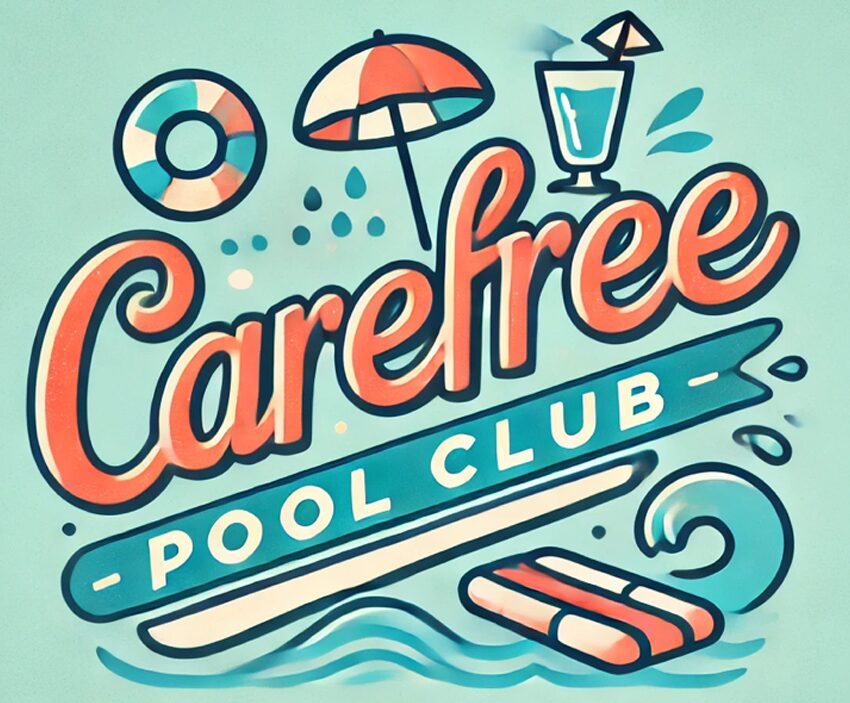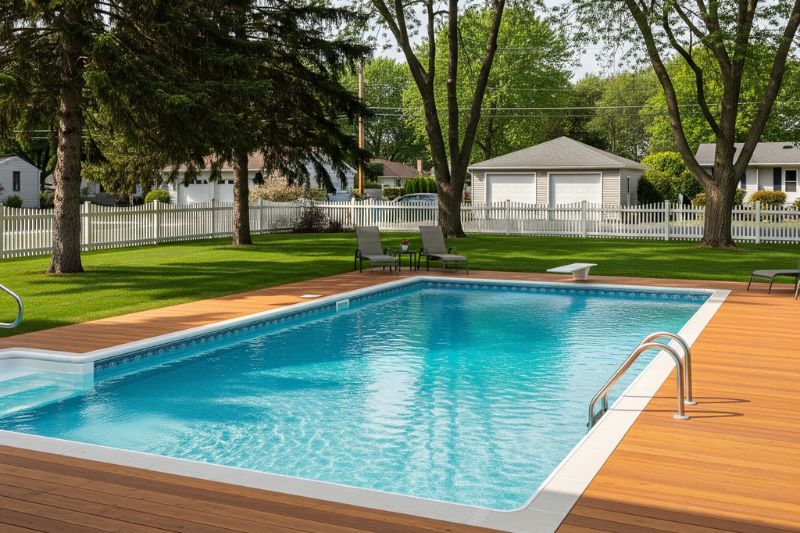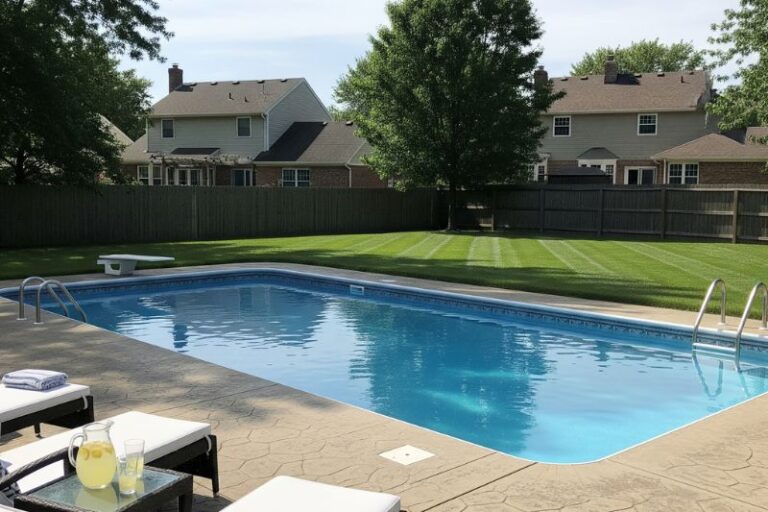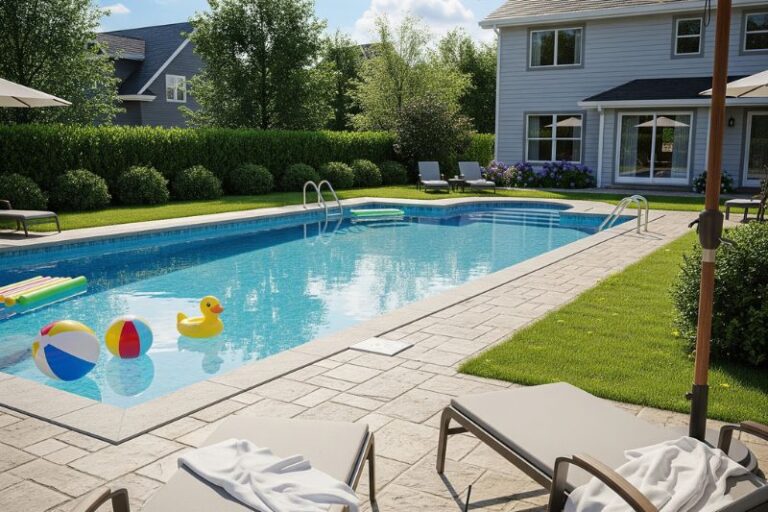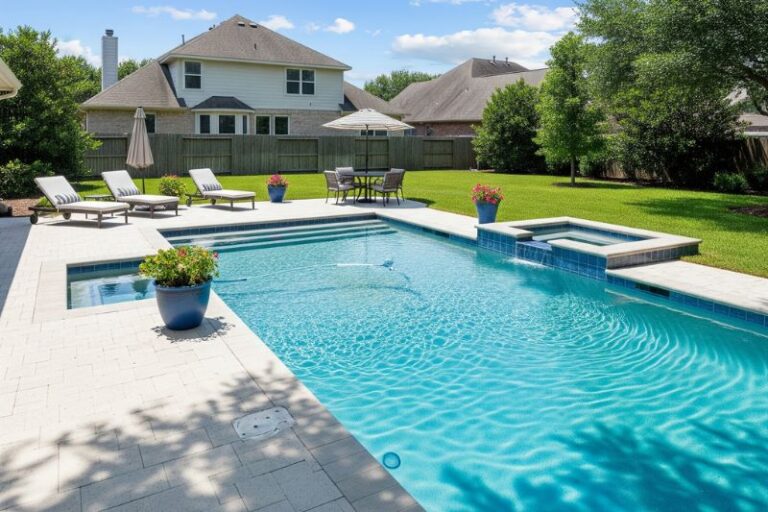It was a quiet morning when the call came in. A homeowner, confident and frustrated, insisted their pool care was flawless. Yet their water shimmered with a chalky haze, and the walls felt rough to the touch. “I’m doing everything right,” they declared. But I knew better. This was another case of calcium hardness pool problems.
Chapter One: The Clues
The first thing I saw was the ghostly cloud swirling in the water. Not enough to completely block the bottom, but enough to make everything look… wrong. The homeowner, standing poolside, kept pointing at the pump and filter like they held all the answers.
Here are the clues I noted:
- Chalky residue on the tile line.
- Water looked dull and hazy.
- Walls felt gritty, almost like sandpaper.
- Fine white dust settled on the steps.
“I vacuum, I shock, I run the filter,” they insisted, arms crossed. “I even scrub the walls every week.” But the clues told another story.
Chapter Two: The Interrogation
I started asking the questions nobody likes.
The Test Kit Testimony
“When was the last time you tested calcium hardness?”
The blank look was answer enough. “I… I just test chlorine and pH. That’s what the store told me to watch.”
Strike one. Calcium hardness is often overlooked, but it’s critical. Too high, and you get scale and chalky water. Too low, and it starts eating away at your plaster.
The Fill Water Factor
Next, I asked about their water source. “Do you fill from the hose or trucked-in water?”
“The hose,” they said proudly. “Straight from my well. No problem there.”
Strike two. Well water is often loaded with minerals, and if you don’t test before adding, you’re just inviting scale to set up shop.
The Filter Fiction
Finally, I asked about their filter maintenance. “When was the last backwash or clean?”
“Oh, last month. It didn’t seem dirty.”
Strike three. A dirty or overwhelmed filter can’t keep up with all the calcium dust forming in the water.
Chapter Three: The Undercover Evidence
It was time to test the water myself. I pulled out a reliable kit and got to work.
- pH: 8.2 (too high)
- Alkalinity: 140 ppm (on the high side)
- Calcium hardness: 550 ppm (way too high)
That last number sealed it. The pool was overloaded with calcium. The excess had nowhere to go, so it started precipitating out, clinging to walls, clouding the water, and making everything feel gritty.
Chapter Four: The Solution
Now that the mystery was cracked, it was time for a plan.
Step 1: Stop Adding
Stop throwing in chemicals without testing. No more baking soda, no more random shock, no more guessing. Everything starts with a proper test.
Step 2: Drain and Dilute
In this case, the calcium level was so high the only real solution was to partially drain the pool and refill with fresh water. A full drain isn’t always necessary, but at least a 30-50% water replacement was called for.
Step 3: Balance the Chemistry
After refilling, I adjusted pH to around 7.4 and brought alkalinity closer to 100 ppm. Calcium hardness should stay between 200 and 400 ppm for most pools. We shot for about 250 ppm.
Step 4: Clean the Filter
The filter got a full clean to remove trapped scale and dust. Filters that are clogged with calcium dust can just keep blowing it back into the water.
Step 5: Prevent Future Build-Up
We also talked about preventative measures like using a sequestering agent occasionally and testing calcium hardness monthly.
Checklist to Avoid Chalky Pool Problems
If you want to avoid becoming the next victim of calcium hardness pool problems, here’s your simple checklist:
- Test water at least once a week for pH, chlorine, alkalinity, and monthly for calcium hardness.
- Keep pH between 7.2 and 7.6.
- Keep alkalinity between 80 and 120 ppm.
- Maintain calcium hardness between 200 and 400 ppm.
- Clean or backwash your filter regularly.
- Watch your fill water. If using a well or hard municipal water, test it first.
- Do not overuse calcium-based products.
Case Closed
With the excess calcium removed, the water started to sparkle again. The walls felt smooth, the haze disappeared, and the homeowner was stunned by how different everything looked. They even admitted they had never even heard of calcium hardness before today.
This case was a reminder: just because the water looks okay today does not mean it is balanced. Testing everything, not just the easy stuff, is what keeps your pool healthy.
Next time you see chalky residue or cloudy water, don’t assume it is just “dust” or “normal.” Look closer. Test smarter. Fix the real problem.
Case closed.
